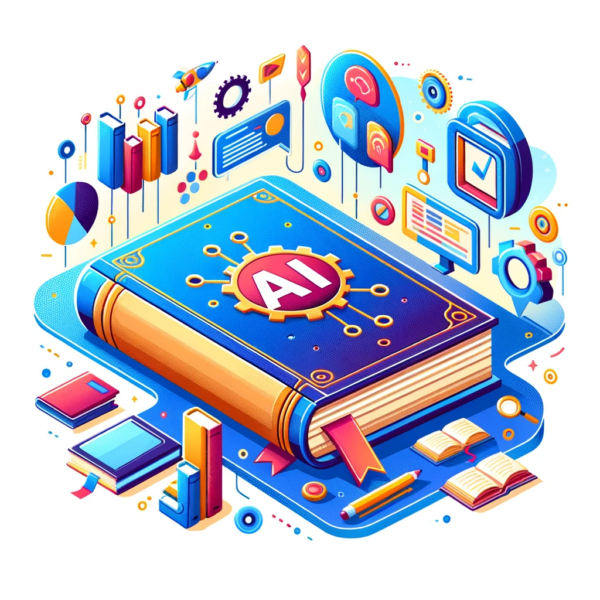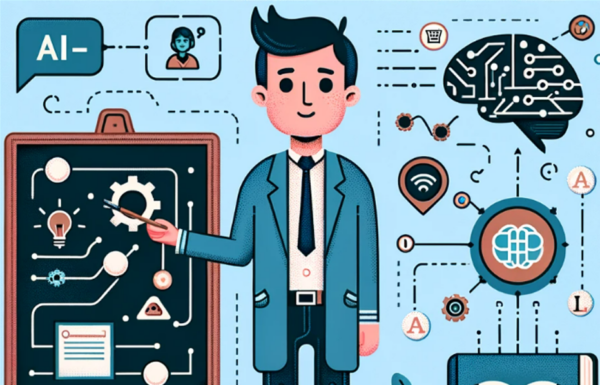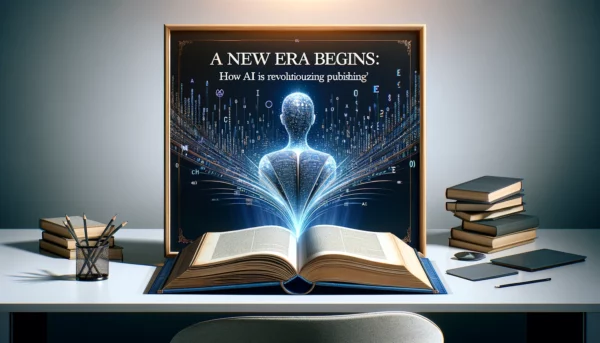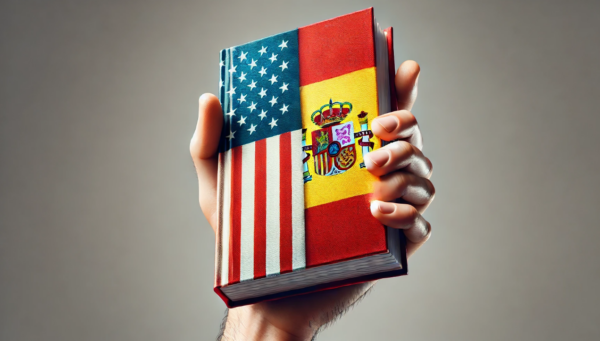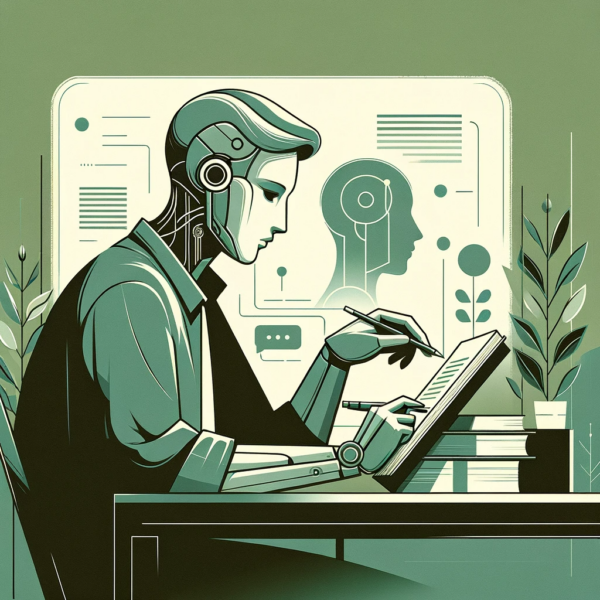Plagiarism has been around longer than the internet itself—whether it was Shakespeare “borrowing” from his contemporaries or a student copying homework, the temptation to cut corners has been ever-present. But while plagiarism detection used to be the domain of sharp-eyed professors and overworked editors, AI tools have now taken center stage in the fight against unoriginal content. These AI-powered tools don’t just help you spot an uncanny resemblance between two papers; they can even sift through vast databases to detect AI-generated content. An AI checker can catch AI-generated content, check for plagiarism, and count words and characters. Confusing? Maybe. Effective? Let’s find out.
In this article, we’ll dive deep into how AI revolutionizes plagiarism detection in manuscripts. From identifying copied content to determining if your favorite chatbot ghostwrote a paragraph, we’ll explore how these tools work and, more importantly, how well they work.
What is AI-generated content?
AI-generated content is any form of text, image, video, or audio created with the help of artificial intelligence tools. These tools, powered by machine learning algorithms and natural language processing (NLP) techniques, can produce content that closely mimics human creation. AI-generated content is becoming increasingly prevalent, from simple text summaries to intricate news articles, social media posts, and even entire books.
Your Publishing Journey Awaits – Start NowThe rise of AI-generated content has sparked concerns about academic integrity and the authenticity of content creation. As AI tools become more sophisticated, distinguishing between human-written and AI-generated text becomes increasingly challenging. This is where AI detectors and plagiarism checkers come into play, helping to identify AI-generated text and ensure the originality of content.
AI-generated content is often created using advanced language models like ChatGPT, GPT-4, and GPT-3. These models are trained on vast datasets, learning the patterns and relationships in language to generate coherent and context-specific text. However, The growing prevalence of AI-generated text has raised some ethical concerns, especially in academic and professional settings.
To address these concerns, an AI detection tool has been developed to identify AI-generated content. These same detector tools use machine learning algorithms to analyze text and detect patterns characteristic of AI-generated content. In just a few seconds, AI detectors can analyze text and provide a probability score indicating the likelihood that the content was generated by an AI tool. These detectors use machine learning to analyze patterns and provide a probability score indicating whether the content is AI-generated or human-written.
Content detection is crucial for maintaining the authenticity and originality of content. AI detectors can be used across various industries, including education, publishing, and marketing, to ensure that content meets the required standards of academic integrity and content creation. By using AI detectors, individuals and organizations can confidently verify that their content is original and free from plagiarism.
In summary, AI-generated content is created using AI tools and machine learning algorithms. AI detectors and plagiarism checkers are essential for identifying AI-generated text and ensuring the accuracy and authenticity of content. By leveraging these tools, individuals and organizations can uphold academic integrity and produce original, high-quality content.
AI to Detect Plagiarism: Understanding AI-Generated Content and Its Impact on Plagiarism
AI-generated content is like a double-edged sword in the world of content creation. On one hand, it can produce text that’s eerily similar to human writing, thanks to advanced AI tools like ChatGPT and other language models. On the other hand, this very capability poses a significant threat to academic integrity and the ethical norms of content creation.
Imagine a student using an AI tool to generate an essay in a few seconds. The result? A piece of writing that’s hard to distinguish from something a human might have penned. This blurring of lines makes it challenging to identify plagiarism, as AI-generated text can seamlessly blend with human-written text. However, the cavalry has arrived in the form of AI detectors. These sophisticated tools use advanced algorithms and natural language processing technology to analyze text and determine whether it was generated by a human or an AI tool.
The rise of AI content has made it more important than ever to ensure the authenticity of content. By leveraging AI detectors, we can uphold academic integrity and maintain the standards of content creation. These tools are not just about catching cheaters; they’re about preserving the value of original work in an increasingly digital world.
Using AI to Detect Plagiarism: How It Works
AI tools are like those detectives in old noir films, only without the trench coats and mood lighting. They work by scanning vast amounts of text, comparing it with billions of documents across the internet and academic databases, and looking for similarities. But unlike human reviewers who might miss a cleverly paraphrased sentence, AI tools focus on patterns in sentence structure, grammar usage, and word choice.
Using advanced algorithms and AI language models, plagiarism detection tools are now more accurate than ever before. They can scan for even slight changes, identifying instances where a sentence has been tweaked just enough to look original but isn’t. AI tools like Turnitin, Copyscape, and Grammarly have become the digital watchdogs for academic and creative integrity, ensuring that unoriginal content gets flagged before it’s too late.
Types of AI Detectors and Their Effectiveness
When it comes to AI detectors, it’s not a one-size-fits-all scenario. There are several types of AI detectors, each with its own set of strengths and weaknesses. Some detectors rely on machine learning algorithms to analyze text and identify patterns characteristic of AI-generated content. These tools are like digital sleuths, picking up on the subtle cues that hint at machine-generated text.
Other detectors use natural language processing (NLP) technology to dive deeper into the syntax and semantics of the text. Think of them as language experts, dissecting sentences to understand their structure and meaning. The effectiveness of these AI detectors can vary depending on the type of content being analyzed and the sophistication of the AI tool used to generate it.
Despite these variations, many AI detectors have proven to be highly effective in identifying AI-generated content. Some boast accuracy rates of 90% or higher, making them reliable allies in the fight against unoriginal content. However, it’s important to remember that no tool is infallible. The key is to understand the capabilities and limitations of each detector and use them accordingly.
The Role of AI in Detecting AI-Generated Content
Just when you thought AI had enough on its plate, it’s also being tasked with catching other AI-generated content using an AI content detector. In a world where ChatGPT can whip up an essay in seconds, identifying AI-generated text has become critical—especially for educators, publishers, and anyone else who values originality.
AI detectors, specifically designed to catch content created by AI language models, analyze text to identify subtle signs that it wasn’t written by a human. These tools work by looking for patterns in sentence structure, tone, and vocabulary that are typical of machine-generated text. The irony? It takes AI to spot text generated by AI, making these tools the high-tech sheriffs of the content-creation world.
Can AI Detection Tools Identify AI-Generated Text Accurately?
The real question is: how good are these tools at identifying AI content? Well, AI detection tools are effective—most of the time. They excel at recognizing patterns and nuances that hint at machine-generated content. However, the increasing sophistication of AI writing models like GPT-4 means that these tools can occasionally stumble.
One of the main challenges is false positives, where human-written content is flagged as AI-generated. Imagine writing an article and being told, “Sorry, you sound too much like a machine.” Ouch. On the flip side, some AI-generated content can slip through undetected, especially as machines become better at mimicking human writing styles.
AI Detection Tools vs. Human Review: Strengths and Weaknesses
Let’s be honest: AI tools are fast, but they’re not perfect. They can save you hours of scanning through text, but they can’t grasp the full context like a human can. While AI detection tools are great for catching word-for-word plagiarism and machine-generated text, they still struggle with more subtle cases, like paraphrasing or cleverly reworded sentences.
Humans, on the other hand, have intuition. They can recognize the flow of a text and understand the finer nuances of plagiarism. But humans also get tired, miss things, and don’t work in a few seconds (unless they’ve had a lot of coffee). So, the best approach? A combination of both—AI detection tools for speed and efficiency in identifying unoriginal content, followed by a human review for the final judgment call.
How AI Tools Help Maintain Academic Integrity
AI tools aren’t just about catching plagiarism; they’re also guardians of academic integrity. Schools, universities, and publishers rely heavily on these tools to ensure that the content being submitted is original and accurate. For students, knowing their work will be checked by advanced algorithms is a strong deterrent against plagiarism.
Your Publishing Journey Awaits – Start NowMore importantly, AI-powered plagiarism checkers are helping educational institutions foster a culture of originality. By detecting both unintentional plagiarism and AI-generated content, these tools help students and authors ensure the originality of their work.
The Impact of AI Detectors on Academia and Education
In the realm of academia and education, AI detectors are making a significant impact. These tools are not just about catching students who try to take shortcuts; they’re about fostering a culture of originality and integrity. Educators can use AI detectors to analyze student assignments and identify any AI-generated content, ensuring that what is submitted is genuinely the student’s work.
But the benefits don’t stop there. AI detectors not only catch unoriginal content but also help students improve their writing skills. Providing feedback on their work and identifying areas where they may need improvement are ways that these tools can guide students toward better writing practices. It’s like having a digital tutor that helps you refine your craft.
In essence, AI detectors are helping to uphold academic standards and ensure that students are meeting the expectations set for them. They’re not just tools for detection; they’re instruments for education and growth, helping to shape the writers of tomorrow.
Best Practices for Using AI Detectors
Using AI detectors effectively requires a strategic approach. First and foremost, it’s essential to choose a detector that is highly effective and accurate. This might involve some research—reading reviews, comparing features, and perhaps even testing a few options to find the best fit.
However, it’s crucial to remember that AI detectors are not infallible. They should not be relied upon solely to identify plagiarism. Human judgment and evaluation are still essential in determining whether a piece of content is original or not. Think of AI detectors as your first line of defense, with human review serving as the final judgment.
Additionally, it’s wise to use AI detectors in conjunction with other plagiarism detection tools, such as traditional plagiarism checkers. This multi-faceted approach ensures thorough coverage, providing a comprehensive check for originality. By combining the speed and efficiency of AI tools with the nuanced understanding of human reviewers, you can achieve the best results in maintaining the integrity of your content.
In conclusion, AI detectors are powerful tools in the fight against plagiarism, but they work best when used thoughtfully and in combination with other methods. By following these best practices, you can ensure that your content remains original and authentic.
Limitations and Challenges: Can AI Tools Be Fooled?
As advanced as they are, AI detection tools still have limitations. For instance, AI plagiarism checkers struggle with detecting heavily paraphrased content. A clever writer (or AI) who understands how these tools work can rearrange sentences, tweak synonyms, and potentially bypass the system. Moreover, false positives remain an issue, with legitimate human writing occasionally flagged as AI-generated or plagiarized.
Even advanced algorithms aren’t immune to making mistakes. These tools rely on patterns and data, meaning they might fail to catch novel or nuanced instances of copied content that don’t fit their expected patterns. And as AI-generated text becomes more sophisticated, keeping up with machine learning models like GPT is going to be an ongoing battle for these detection systems.
Future of AI Detection: Advancing Algorithms and Addressing Challenges
The good news is that AI is evolving at breakneck speed. Plagiarism detection tools will continue to improve, with more advanced algorithms capable of distinguishing between human and AI-generated text. Additionally, efforts are underway to reduce false positives and make these systems more reliable.
In the future, we can expect AI detection tools to incorporate even deeper learning models, allowing them to identify subtle, nuanced cases of plagiarism or machine-generated content. While AI-generated text will only become harder to detect, the constant evolution of AI tools means they’ll continue to meet the challenge head-on.
Are AI Detection Tools the Future of Plagiarism Checking?
So, how effective are AI detection tools? In a world where both humans and machines are capable of generating vast amounts of content at lightning speed, AI detection tools are indispensable. They’re quick, efficient, and can handle the immense scale of content production today. However, they’re not without their flaws—false positives, missed paraphrasing, and the constant arms race with AI-generated text all present ongoing challenges.
But here’s the thing: just like AI has revolutionized the way we write, it’s also revolutionizing the way we detect unoriginal content. These tools may not be perfect, but they’re a critical step toward maintaining integrity in academic, creative, and professional writing. So the next time you submit a manuscript, don’t be surprised if your words are scrutinized by an AI-powered detective.
Curious about the originality of your manuscript? With Spines, you can harness the power of AI for a thorough review that includes plagiarism detection. Sign up today for a free review and ensure your book is 100% ready for readers!
Your Publishing Journey Awaits – Start Now

